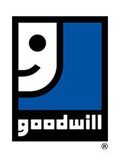Listing skills on your resume is fairly easy.
Listing the right skills in the right way is a little bit trickier.
In this guide, we’ll explain how to identify the right skills, and how to list them on your resume.
How (and Why) to List Skills on a Resume
The skills section is one of the 3 most important resume sections (the other two are Work Experience and Education).
So you’re probably wondering, “how hard can this be, right? All I have to do is list all my skills and call it a day!”
Well, not exactly. The process of putting skills on your resume is a bit more nuanced than that, and we’re going to explain why.
Most companies nowadays are using applicant tracking systems (ATS) to help them go through hundreds and thousands of resumes they receive per day.
These systems scan your resume for keywords relevant to the job you’re looking for. Say, the role requires an expert level in Java. If you haven’t mentioned Java as a skill, your resume can automatically get discarded.
In fact, 70%+ of resumes are rejected at this stage, never even reaching the human eye.
Even if the company doesn’t use an ATS, there’s a good chance that the HR manager is going to skim through your resume looking for the right skill set.
So, whether you’re doing this for the ATS or the HR, it’s important to mention the right skills.
Hard Skills vs Soft Skills – What’s the Difference?
Hard skills refer to the technical knowledge or training you have gotten through experience. They are specific and essential to each job and are used for completing your tasks.
Hard Skills Include (& Examples):
- Machinery skills – operating a road roller, operating a PoS, pallet-stacker, forklift, etc.
- Software skills – Adobe Creative Suite, Ableton Live Suite
- Tools – SEM Marketing, Stethoscope, Google Analytics, Google Search Console, ERP systems, CRMs
- Languages – French, Spanish
- Coding Languages – Python, C++, C#, Java, Scala, R
- Techniques – Frequency analysis, Crystallization
- Mathematics
- Accounting & bookkeeping
- And just about any task-specific skill
Soft skills, on the other hand, are attributes and habits that describe how you work individually or with others. They are not specific to a job, but indirectly help you adapt to the work environment and company culture.
Some of the most in-demand soft skills are:
- Effective communication
- Teamwork
- Responsibility
- Creativity
- Problem-solving
- Leadership
- Extroversion
- People skills
- Openness
- Adaptability
How to List Skills on a Resume (And Stand Out)
Now that you know about different types of skills, let’s talk about how to list them on your resume. There are several best practices you can follow to stand out:
Tailor Your Skills to the Job
Relevance is key. Only list skills that are appropriate for the job you are applying for. You can figure out which ones are relevant by scanning a job listing.
Job ads usually list a set of requirements or skills they expect a good candidate to have. Make sure you don’t leave any of those out on your resume.
Back up Your Skills with Other Resume Sections
If you mention Food Prepping as one of your skills, you should have food prepping roles or other organizations described throughout your work experience to back that up.
Put Transferable Skills to Use
Transferable skills are not directly related to the job you are applying to but are still useful.
For example, if you’re applying for a job outside your established area in marketing data analysis, you can still mention some of those old skills in financial data analysis. It’ll show you have a starting basis and experience with the type of work. You can still mention these in your financial data analyst resume, but omitting the marketing background in which they were used.
Mention 2-3 Universal Skills
These are mainly soft skills that are needed in almost every job out there. They can be soft skills, such as problem-solving abilities, effective communication, or time management, or hard skills, like speed typing, using Powerpoint or Excel.
Feel free to include any universal skills even if they’re not specifically required or mentioned in the job description. However, you shouldn’t overflow your resume with these, because it might look generic. Mention them if you have the space and have run out of more advanced job-specific skills.
Conclusion
- Include a section in your resume devoted entirely to your skills. This helps you pass through applicant tracking systems & get noticed by the HR manager.
- The differences between hard skills and soft skills are in the way they are applied (directly vs. indirectly) and the way they are obtained (through education and practice vs. personality traits and experience)
- On your resume, list only skills that are relevant to the job, scan the job listing for must-have skills and list those (if you have them), back up your skills with your resume sections, and mention transferable and universal skills.
This post is adapted from an article that originally appeared on the Novorésumé Career Blog. Read the full blog post.



